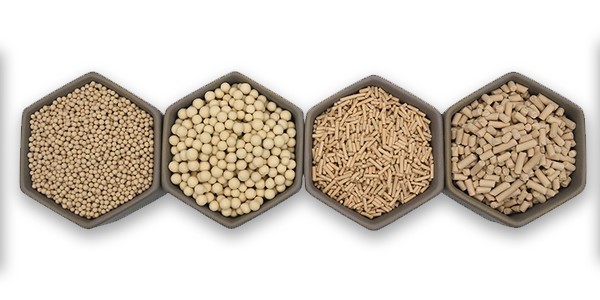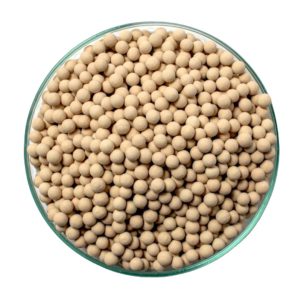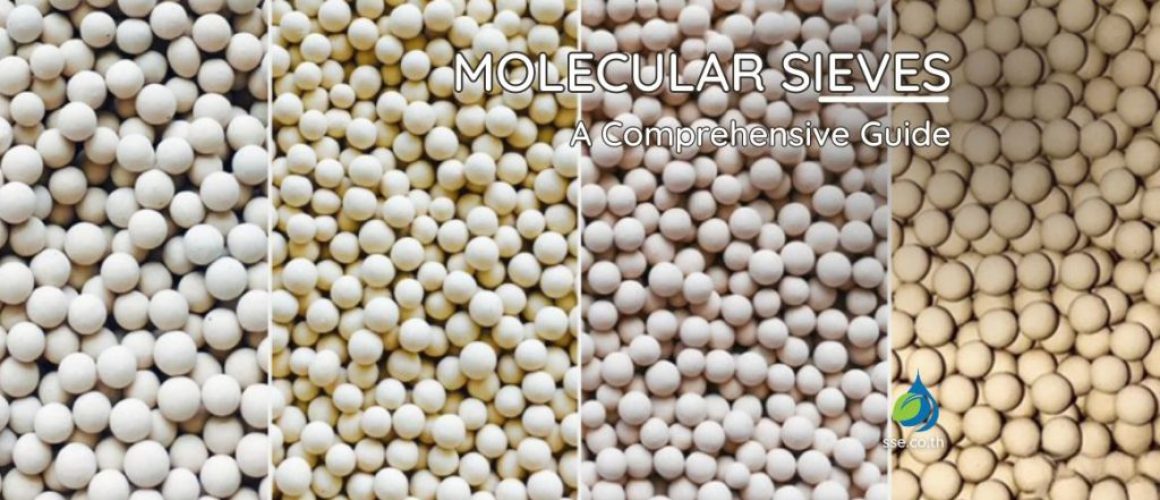Your Comprehensive Guide to Molecular Sieves 2024

| Key Points | Description |
|---|---|
| Introduction | Molecular sieves are versatile materials used in various industries for their ability to separate and adsorb molecules. |
| Types and Applications | Molecular sieves come in various types, including 3A, 4A, 5A, and 13X, each suited for different applications across various industries. |
| How They Work | Molecular sieves function at the molecular level, with unique structures and adsorption properties. |
| Industry Applications | Molecular sieves are used in the petrochemical, pharmaceutical, and food and beverage industries for various processes, including refining, purification, solvent drying, gas purification, and chromatography. |
| Regeneration and Reuse | Molecular sieves can be regenerated and reused by heating them to remove the adsorbed molecules. |
| Environmental Impact | Understanding the environmental impact of molecular sieves is crucial, and there are sustainable practices and alternatives available. |
| Molecular Sieves vs. Silica Gel | Molecular sieves and silica gel are different types of desiccants, each with their own properties and performance characteristics. |
| Advances in Technology and Research | There are ongoing advancements in molecular sieve technology and research, including new materials, manufacturing techniques, and applications. |
| Troubleshooting | Common issues with molecular sieves, such as adsorption capacity loss, dust formation, and regeneration problems, can be addressed with proper troubleshooting. |
| Product Range | SSE offers a wide range of high-quality molecular sieves in various types, sizes, and formats. |
Table of Contents
Introduction
Molecular sieves are versatile and powerful materials used in various industries for their ability to separate and adsorb molecules. They have unique properties that make them ideal for a wide range of applications, from petrochemicals to food and beverage preservation. In this comprehensive guide, we will explore the different aspects of molecular sieves, including their types, applications, and the latest advancements in technology and research. We’ll also provide essential information on their environmental impact, regeneration and reuse, troubleshooting, and comparisons with other desiccants like silica gel. Let’s dive in!
Types and Applications of Molecular Sieves
Understanding the different types of molecular sieves and their applications is crucial for selecting the right material for your specific needs. This article discusses the various types of molecular sieves, including 3A, 4A, 5A, and 13X, and explores their applications across various industries. Read More
How Molecular Sieves Work
To fully appreciate the power of molecular sieves, it’s essential to understand how they function at the molecular level. This article explains the science behind molecular sieves, focusing on their unique structure, adsorption properties, and the factors that influence their performance. Read More
Molecular Sieves in the Petrochemical Industry
Molecular sieves play a vital role in the petrochemical industry, with applications ranging from refining and purification to the production of high-purity gases. This article delves into the uses of molecular sieves in this industry, highlighting their advantages and benefits. Read More
Molecular Sieves in the Pharmaceutical Industry
The pharmaceutical industry also relies heavily on molecular sieves for various processes, including solvent drying, gas purification, and chromatography. This article provides an in-depth look at the applications and benefits of molecular sieves in the pharmaceutical sector. Read More

Molecular Sieves in the Food and Beverage Industry
Molecular sieves offer unique advantages for the food and beverage industry, particularly in terms of preserving product freshness and extending shelf life. This article explores the various applications of molecular sieves in this industry, from packaging to gas purification. Read More
Regeneration and Reuse of Molecular Sieves
To maximize the efficiency and cost-effectiveness of molecular sieves, it’s crucial to understand their regeneration and reuse potential. This article covers the methods for regenerating molecular sieves and provides guidance on when and how to reuse them. Read More
The Environmental Impact of Molecular Sieves
As environmental concerns become increasingly important, understanding the environmental impact of molecular sieves is crucial. This article discusses the ecological footprint of molecular sieves and offers insights into sustainable practices and alternatives. Read More
Molecular Sieves vs. Silica Gel
Choosing the right desiccant for your application is critical, and this article compares the properties and performance of molecular sieves and silica gel. Learn the differences between these materials and how to select the best option for your needs. Read More
Advances in Molecular Sieve Technology and Research
Stay up to date with the latest advancements in molecular sieve technology and research. This article covers recent developments and innovations in the field of molecular sieves, including new materials, manufacturing techniques, and applications. Read More
Troubleshooting Common Issues with Molecular Sieves
Molecular sieves can occasionally present challenges during use. This article provides valuable troubleshooting advice for common issues, such as adsorption capacity loss, dust formation, and regeneration problems, helping you get the most out of your molecular sieves. Read More
The Versatility of 13X Molecular Sieves
13X molecular sieves are among the most versatile and widely used types of molecular sieves. This article highlights their unique properties, including their large pore size and high adsorption capacity, and explores their numerous applications across various industries. Read More
The Power of JLOX Molecular Sieves
Discover the unique properties of JLOX series molecular sieves, including JLOX-100, JLOX-300, and JLOX-500, and their applications in industries. Learn how these Lithium Molecular Sieves can enhance your industrial processes.
Our Product Range
At SSE, we understand the importance of finding the right molecular sieve product for your specific needs. That’s why we offer a wide range of high-quality molecular sieves in various types, sizes, and formats, ensuring optimal performance and efficiency for your applications.
For those in need of a 3A molecular sieve, we have two options available, each with a different bead size. Our 3A molecular sieve – 150kg drum (3mm-5mm) and 3A molecular sieve – 150kg drum (1.6mm-2.5mm) both offer exceptional performance and are perfect for drying and purifying various liquids and gases.
In the market for a 4A molecular sieve? Look no further than our 4A molecular sieve – 150kg drum (3mm-5mm) and 4A molecular sieve – 150kg drum (1.6mm-2.5mm). These products are ideal for a range of applications, including the removal of water, ammonia, and other contaminants from various gas streams.
For more specialized applications, consider our 5A molecular sieve – 150kg drum (3mm-5mm) and 5A molecular sieve – 150kg drum (1.6mm-2.5mm). These molecular sieves are perfect for the separation of normal and iso-paraffins, as well as the purification of oxygen and hydrogen.
If you require the versatility of a 13X molecular sieve, our molecular sieve 13X (3mm-5mm) is an excellent choice for a wide range of applications, including air separation and gas dehydration.
Additionally, we offer specialty molecular sieves such as JLOX-500 (1.6mm-2.5mm) and JLOX-501 (0.4mm-0.8mm), which are specifically designed for oxygen generation in medical and industrial applications.
To explore our entire range of molecular sieves and find the perfect product for your needs, visit our molecular sieve product category. At SSE, we are committed to providing high-quality, reliable molecular sieves that deliver exceptional performance for all your applications.
 โมเลกุลลาร์ ซีฟ ออกซิเจน JLOX500 PSA 1.6-2.5mm Molecular Sieve (125kg/drum)
โมเลกุลลาร์ ซีฟ ออกซิเจน JLOX500 PSA 1.6-2.5mm Molecular Sieve (125kg/drum) ลด CO2 และความชื้นด้วย 13x โมเลกุลลาร์ ซีฟ | ขายส่ง 125kg/กล่อง | คุณภาพดี | ตรวจสอบและกรองอากาศ
ลด CO2 และความชื้นด้วย 13x โมเลกุลลาร์ ซีฟ | ขายส่ง 125kg/กล่อง | คุณภาพดี | ตรวจสอบและกรองอากาศ โมเลกุลลาร์ ซีฟ 13x โมเลกุลตะแกรงดูดความชื้นสำหรับการคายน้ำโดยทั่วไป 1.6-2.5mm Molecular Sieve 13x (125kg/drum)
โมเลกุลลาร์ ซีฟ 13x โมเลกุลตะแกรงดูดความชื้นสำหรับการคายน้ำโดยทั่วไป 1.6-2.5mm Molecular Sieve 13x (125kg/drum) โมเลกุลลาร์ ซีฟ JLOX-500 และ JLOX-501 ด้วยเทคโนโลยี PSA สร้างออกซิเจนความบริสุทธิ์สูง มีประสิทธิภาพสูงและคุ้มค่า
โมเลกุลลาร์ ซีฟ JLOX-500 และ JLOX-501 ด้วยเทคโนโลยี PSA สร้างออกซิเจนความบริสุทธิ์สูง มีประสิทธิภาพสูงและคุ้มค่า โมเลกุลลาร์ ซีฟ 4a: สารดูดซับที่มีประสิทธิภาพและคุณภาพเยี่ยม 3-5mm Molecular Sieve 4A (150kg/drum)
โมเลกุลลาร์ ซีฟ 4a: สารดูดซับที่มีประสิทธิภาพและคุณภาพเยี่ยม 3-5mm Molecular Sieve 4A (150kg/drum) โมเลกุลลาร์ ซีฟ 3a โมเลกุลตะแกรงดูดความชื้นสำหรับการคายน้ำโดยทั่วไป 3-5mm Molecular Sieve 3A (150kg/drum)
โมเลกุลลาร์ ซีฟ 3a โมเลกุลตะแกรงดูดความชื้นสำหรับการคายน้ำโดยทั่วไป 3-5mm Molecular Sieve 3A (150kg/drum)
Frequently Asked Questions
What are molecular sieves?
Molecular sieves are highly porous, crystalline aluminosilicate materials that are commonly used as adsorbents in various industrial processes. They can effectively separate molecules based on their size and shape, making them ideal for a wide range of applications, such as gas and liquid purification, dehydration, and separation.
What types of molecular sieves does SSE offer?
SSE offers a variety of molecular sieve types, including 3A, 4A, 5A, and 13X. We also provide specialty molecular sieves like JLOX-500 and JLOX-501 for specific applications in oxygen generation.
How do I choose the right molecular sieve for my application?
The choice of molecular sieve depends on your specific application requirements, such as the type of molecules you need to adsorb, the operating conditions, and the desired level of purification. Consult with a packaging expert or our team for guidance on selecting the appropriate molecular sieve for your needs.
Can molecular sieves be reused?
Yes, molecular sieves can often be regenerated and reused by heating them to remove the adsorbed molecules. However, the regeneration process may vary depending on the type of molecular sieve and the specific application. It is essential to follow the manufacturer’s guidelines for proper regeneration and reuse.
What is the difference between 3A, 4A, 5A, and 13X molecular sieves?
The primary difference between these molecular sieves is their pore size, which determines the types of molecules they can adsorb. 3A molecular sieves have a pore size of approximately 3 angstroms, 4A sieves have a 4-angstrom pore size, 5A sieves have a 5-angstrom pore size, and 13X sieves have a larger pore size of approximately 10 angstroms. Each type of molecular sieve is suited for different applications, depending on the size and shape of the molecules being separated.
What are JLOX-500 and JLOX-501 molecular sieves used for?
JLOX-500 and JLOX-501 are specialty molecular sieves designed specifically for oxygen generation in medical and industrial applications. They are highly effective in separating oxygen from air, resulting in high-purity oxygen suitable for various uses.
How do I store unused molecular sieves?
Unused molecular sieves should be stored in an airtight container to prevent exposure to moisture and air. This will help maintain their effectiveness and prolong their shelf life.
Can I use molecular sieves in combination with other purification methods?
Yes, molecular sieves can be used in conjunction with other purification methods, such as activated carbon, silica gel, or other adsorbents, to achieve the desired level of purification and separation in your specific application.
Conclusion: Exploring the World of Molecular Sieves
As we’ve seen, molecular sieves are incredibly diverse and useful materials with applications spanning across multiple industries. By understanding their properties, types, and functions, you can select the best molecular sieve for your specific needs and maximize its performance. We hope this comprehensive guide has provided valuable insights into the fascinating world of molecular sieves and their numerous applications.
https://www.sciencedirect.com/topics/chemistry/molecular-sieve
https://www.sciencedirect.com/science/article/abs/pii/S092422442030488X
https://en.wikipedia.org/wiki/Molecular_sieve
ขอบคุณที่ใช้เวลาอ่านบทความของเราเกี่ยวกับการป้องกันความชื้น ทางเราหวังว่าท่านจะได้รับข้อมูลที่มีคุณค่าและเป็นประโยชน์ ทางเรายินดีให้บริการการปรึกษาฟรีเพื่อพูดคุยเกี่ยวกับความต้องการของท่านและให้คำแนะนำเกี่ยวกับวิธีการป้องกันความชื้นที่กำหนดเฉพาะสำหรับคุณ โปรดติดต่อเราที่ 0858124188 เพื่อนัดหมายการปรึกษาหรือเยี่ยมชมร้านค้าของเราเพื่อค้นหาผลิตภัณฑ์ที่ช่วยป้องกันสินค้าของคุณจากความเสียหายจากความชื้น ทางเราหวังว่าจะได้รับข่าวสารจากท่านเร็วๆนี้
